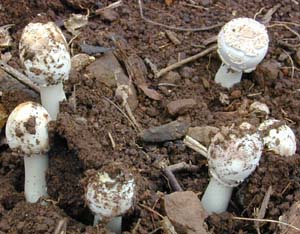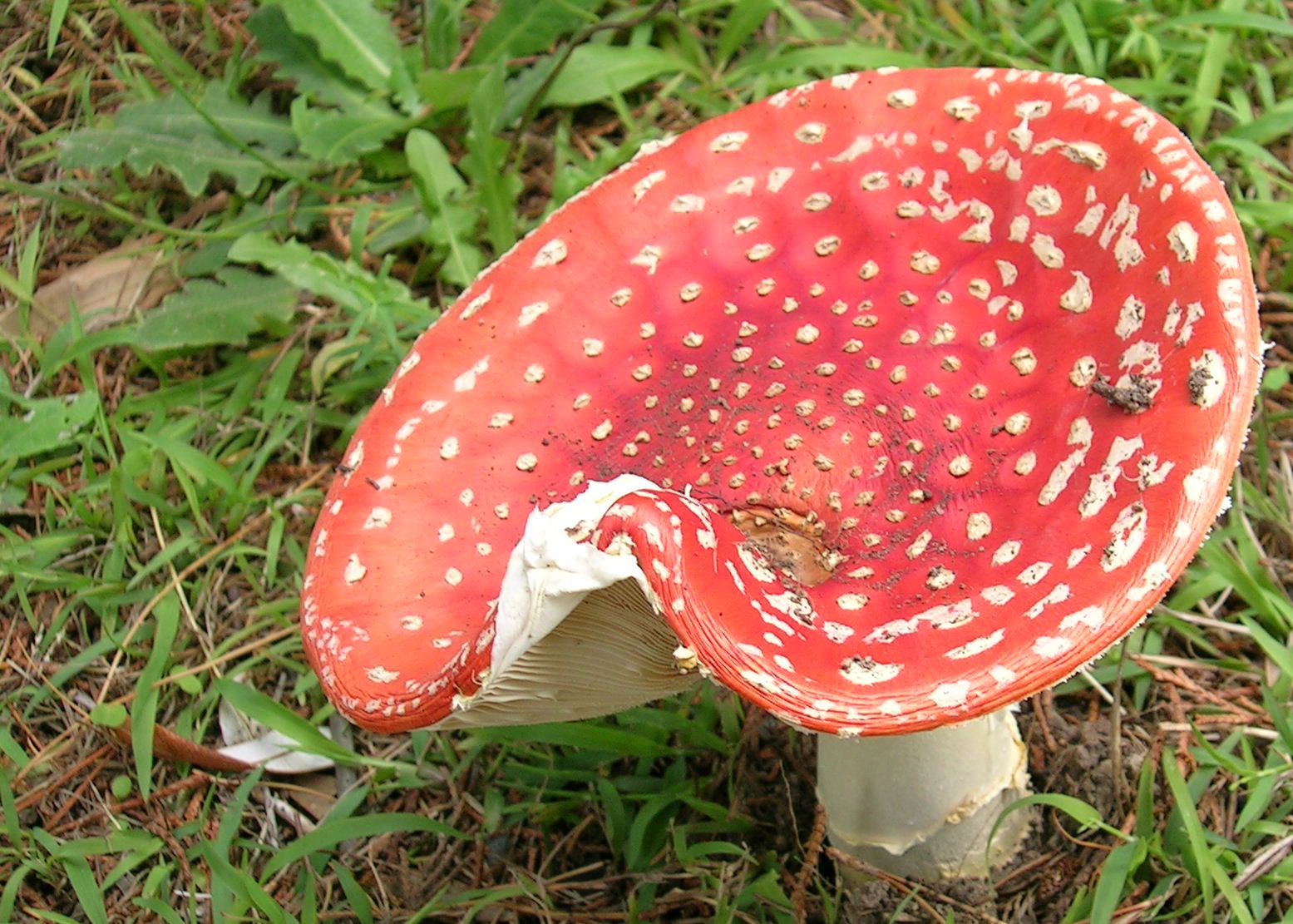|
Inocybe Bongardii
''Inosperma bongardii'' is an agaric fungus in the family Inocybaceae. It was originally described as a species of ''Agaricus'' by German botanist Johann Anton Weinmann in 1836. Lucien Quélet transferred it to the genus ''Inocybe'' in 1872. A 2019 multigene phylogenetic study by Matheny and colleagues found that ''I. bongardii'' and its relatives in the subgenus ''Inosperma'' were only distantly related to the other members of the genus ''Inocybe''. ''Inosperma'' was raised to genus rank and the species became ''Inosperma bongardii''. It is a common species with a widespread distribution. Fruit bodies grow on the ground, often in clay soils, and typically with broadleaf trees. The fruit bodies are suspected to be toxic, as they contain muscarine Muscarine, L-(+)-muscarine, or muscarin is a Secondary metabolite, natural product found in certain mushrooms, particularly in ''Inocybe'' and ''Clitocybe'' species, such as the deadly ''Clitocybe dealbata, C. dealbata''. Mush ... [...More Info...] [...Related Items...] OR: [Wikipedia] [Google] [Baidu] |
Johann Anton Weinmann
Johann Anton Weinmann (; 23 December 1782, Würzburg - 5 August 1858, Pavlovsk, Saint Petersburg, Pavlovsk) was a German botanist who served as Inspector of the Gardens in Saint Petersburg, Russia. He published a ''Flora'' that is the basis of some binomial species identifications. Beginning in 1803, he was head gardener of the newly established botanical garden in Tartu, Dorpat; from 1823 he served as inspector of the garden of Maria Feodorovna (Sophie Dorothea of Württemberg), Empress Maria Fyodorovna in Pavlovsk near St. Petersburg. He also studied fungi (being, for instance, the original author for the name ''Echinoderma acutesquamosum'') and his name is commemorated with the mycological genera ''Weinmannioscyphus'' and ''Weinmannodora'', the latter genus being circumscribed by Elias Magnus Fries in 1849. Published works * ''Der botanische Garten der Kaiserlichen Universität zu Dorpat im Jahre 1810''. 1810 - The botanical garden of the Imperial University of Dorpat in 181 ... [...More Info...] [...Related Items...] OR: [Wikipedia] [Google] [Baidu] |
Mushroom Poisoning
Mushroom poisoning is poisoning resulting from the ingestion of mushrooms that contain toxicity, toxic substances. Signs and symptoms, Symptoms can vary from slight Gastrointestinal tract, gastrointestinal discomfort to death in about 10 days. Mushroom toxins are secondary metabolites produced by the fungus. Mushroom poisoning is usually the result of ingestion of wild mushrooms after misidentification of a Mycotoxin, toxic mushroom as an edible species. The most common reason for this misidentification is a close resemblance in terms of color and general Morphology (biology), morphology of the toxic mushrooms species with edible species. To prevent mushroom poisoning, mushroom gatherers familiarize themselves with the mushrooms they intend to collect, as well as with any similar-looking toxic species. The safety of eating wild mushrooms may depend on methods of preparation for cooking. Some toxins, such as amatoxins, are Thermostability, thermostable and mushrooms containing such ... [...More Info...] [...Related Items...] OR: [Wikipedia] [Google] [Baidu] |
Fungi Of Europe
A fungus (: fungi , , , or ; or funguses) is any member of the group of eukaryotic organisms that includes microorganisms such as yeasts and mold (fungus), molds, as well as the more familiar mushrooms. These organisms are classified as one of the kingdom (biology)#Six kingdoms (1998), traditional eukaryotic kingdoms, along with Animalia, Plantae, and either Protista or Protozoa and Chromista. A characteristic that places fungi in a different kingdom from plants, bacteria, and some protists is chitin in their cell walls. Fungi, like animals, are heterotrophs; they acquire their food by absorbing dissolved molecules, typically by secreting digestive enzymes into their environment. Fungi do not photosynthesize. Growth is their means of motility, mobility, except for spores (a few of which are flagellated), which may travel through the air or water. Fungi are the principal decomposers in ecological systems. These and other differences place fungi in a single group of related o ... [...More Info...] [...Related Items...] OR: [Wikipedia] [Google] [Baidu] |
Poisonous Fungi
This is a compendium of poisonous fungi. See also mushroom poisoning. List of toxic mushroom species ''There are poisonous fungus species listed below.'' List of suspicious mushroom species See also *List of deadly fungi *List of poisonous animals *List of poisonous plants *Mushroom poisoning *Mycotoxicology *Mycotoxin References External links * {{DEFAULTSORT:Poisonous fungus species Causes of death Death-related lists Poisonous fungi, Lists of fungal species, poisonous fungi, List of ... [...More Info...] [...Related Items...] OR: [Wikipedia] [Google] [Baidu] |
Index Fungorum
''Index Fungorum'' is an international project to index all formal names (scientific names) in the fungus kingdom. As of 2015, the project is based at the Royal Botanic Gardens, Kew, one of three partners along with Landcare Research and the Institute of Microbiology, Chinese Academy of Sciences. It is somewhat comparable to the International Plant Names Index (IPNI), in which the Royal Botanic Gardens is also involved. A difference is that where IPNI does not indicate correct names, the ''Index Fungorum'' does indicate the status of a name. In the returns from the search page, a currently correct name is indicated in green, while others are in blue (a few, aberrant usages of names are indicated in red). All names are linked to pages giving the correct name, with lists of synonyms. ''Index Fungorum'' is one of three nomenclatural repositories recognized by the Nomenclature Committee for Fungi; the others are '' MycoBank'' and '' Fungal Names''. As of 2023, over a millio ... [...More Info...] [...Related Items...] OR: [Wikipedia] [Google] [Baidu] |
List Of Inocybe Species
''Inocybe'' is a large genus of mushroom-producing fungi in the order Agaricales. The genus is widely distributed in the Northern Hemisphere. , Index Fungorum accepts 848 species in ''Inocybe''. As of 2023, it is estimated that there are 1050 species in this genus. #A, A #B, B #C, C #D, D #E, E #F, F #G, G #H, H #I, I #J, J #K, K #L, L #M, M #N, N #O, O #P, P #Q, Q #R, R #S, S #T, T #U, U #V, V #U, U #W, W #X, X #Y, Y #Z, Z __NOTOC__ A *''Inocybe aberrans'' (E.Horak) Garrido 1988 *''Inocybe abietis'' Kühner 1953 *''Inocybe abnormispora'' Alessio 1987 *''Inocybe abundans'' Murrill 1911 *''Inocybe acriolen'' Grund & D.E.Stuntz 1975 *''Inocybe acuta'' Boud. 1917 *''Inocybe acutata'' Tak. Kobay. & Nagas. 1993 *''Inocybe acutoides'' Kokkonen & Vauras 2013 *''Inocybe acystidiosa'' Kauffman 1924 *''Inocybe adaequata'' (Britzelm.) Sacc. 1887 – Europe *'' Inocybe aeruginascens'' Babos 1970 (psychoactive) *''Inocybe aestiva'' Kropp, Matheny & Hutchison 2013 – USA *''Inocybe agard ... [...More Info...] [...Related Items...] OR: [Wikipedia] [Google] [Baidu] |
Muscarine
Muscarine, L-(+)-muscarine, or muscarin is a Secondary metabolite, natural product found in certain mushrooms, particularly in ''Inocybe'' and ''Clitocybe'' species, such as the deadly ''Clitocybe dealbata, C. dealbata''. Mushrooms in the genera ''Entoloma'' and ''Mycena'' have also been found to contain levels of muscarine which can be dangerous if ingested. Muscarine has been found in harmless trace amounts in the genera ''Boletus'', ''Hygrocybe'', ''Lactarius (fungus), Lactarius'' and ''Russula''. Trace concentrations of muscarine are also found in ''Amanita muscaria'', though the pharmacologically more relevant compound from this mushroom is the Z-drug-like alkaloid muscimol. ''A. muscaria'' basidiocarp, fruitbodies contain a variable dose of muscarine, usually around 0.0003% fresh weight. This is very low and toxicity symptoms occur very rarely. ''Inocybe'' and ''Clitocybe'' contain muscarine concentrations up to 1.6%. Muscarine is a selective agonist of the muscar ... [...More Info...] [...Related Items...] OR: [Wikipedia] [Google] [Baidu] |
Clay
Clay is a type of fine-grained natural soil material containing clay minerals (hydrous aluminium phyllosilicates, e.g. kaolinite, ). Most pure clay minerals are white or light-coloured, but natural clays show a variety of colours from impurities, such as a reddish or brownish colour from small amounts of iron oxide. Clays develop plasticity (physics), plasticity when wet but can be hardened through Pottery#Firing, firing. Clay is the longest-known ceramic material. Prehistoric humans discovered the useful properties of clay and used it for making pottery. Some of the earliest pottery shards have been radiocarbon dating, dated to around 14,000 BCE, and Clay tablet, clay tablets were the first known writing medium. Clay is used in many modern industrial processes, such as paper making, cement production, and chemical filtration, filtering. Between one-half and two-thirds of the world's population live or work in buildings made with clay, often baked into brick, as an essenti ... [...More Info...] [...Related Items...] OR: [Wikipedia] [Google] [Baidu] |
Agaric
An agaric () is a type of fungal fruiting body characterized by the presence of a pileus (cap) that is clearly differentiated from the stipe (stalk), with lamellae (gills) on the underside of the pileus. It is a type of mushroom (or toadstool), the diverse group of agarics being lumped together as gilled mushrooms. "Agaric" can also refer more generally to any basidiomycete species characterized by an agaric-type fruiting body. Etymology Originally, agaric meant 'tree-fungus' (after Latin ''agaricum''); however, that changed with the Linnaean interpretation in 1753 when Linnaeus used the generic name '' Agaricus'' for gilled mushrooms. Taxonomy Most species of agarics belong to the order Agaricales in the subphylum Agaricomycotina. The exceptions, where agarics have evolved independently, feature largely in the orders Russulales, Boletales, Hymenochaetales, and several other groups of basidiomycetes. Old systems of classification placed all agarics in the Agaricales and ... [...More Info...] [...Related Items...] OR: [Wikipedia] [Google] [Baidu] |
Inosperma
''Inosperma'' is a genus of gilled mushroom in the family Inocybaceae. Previously defined as a subgenus within the large genus ''Inocybe'' by Robert Kühner in 1980, these fungi were found to be more distantly related in a 2019 multigene phylogenetic study by Matheny and colleagues. Description This group of mushrooms was distinguished morphologically from other ''Inocybes'' by the absence of pleurocystidia and the shape of the spores. Also the stem is usually longer than the cap is wide and the cheilocystidia consist each of a single cell and are often so numerous that they make the gill edge white. ''Inosperma'' is divided into two sections: ''Cervicolores'' (with a scaly cap) and ''Rimosae'' (with a radially fibrose or radially cracking ("rimose") cap). The former includes ''I. bongardii'' and ''I. calamistratum'' whilst the latter takes in ''I. cookei'', ''I. erubescens'', ''I. maculatum'' and ''I. rimosum''. Species , Index Fungorum lists the following species in ''Inos ... [...More Info...] [...Related Items...] OR: [Wikipedia] [Google] [Baidu] |
Inocybe
''Inocybe'' is a genus of mushroom-forming fungi, with over 1,000 species. Its members are mycorrhizal, and some evidence shows that the high degree of speciation is due to adaptation to different trees and possibly also local habitats. Taxonomy The genus was first described as ''Agaricus'' tribe ''Inocybe'' by Swedish scholar Elias Magnus Fries in volume 1 of his work, ''Systema mycologicum'' (1821), and verified in the volume 2 of his book ''Monographia Hymenomycetum Sueciae'' in 1863. All other renaming attempts are accepted synonymous. Although originally placed in the family Cortinariaceae (later shown to be polyphyletic), phylogenetic analyses suggests that the genus is better placed as the type genus of the family Inocybaceae. Sections or subgenera Source: Two supersections are informally recognized: ''Cortinate'' supersection: The stipe is only pruinose at the apex or the upper half. The stipe base is (generally) not bulbous and a remnant of a cortina is present in ... [...More Info...] [...Related Items...] OR: [Wikipedia] [Google] [Baidu] |






